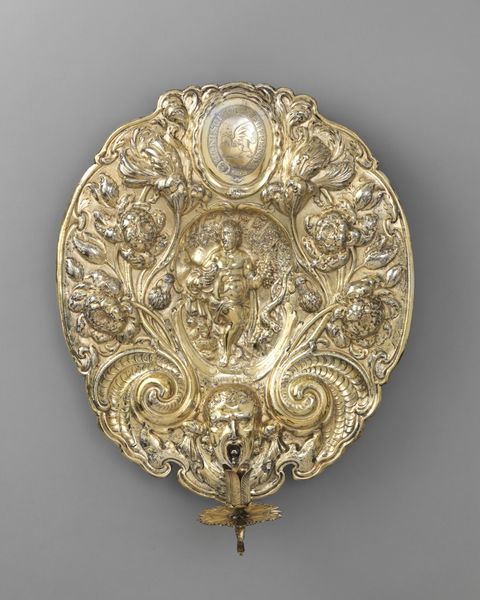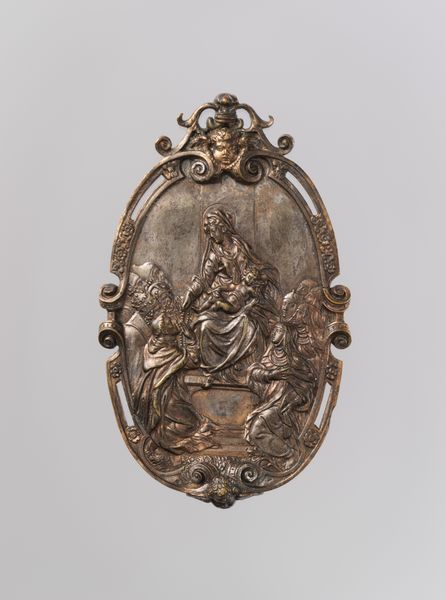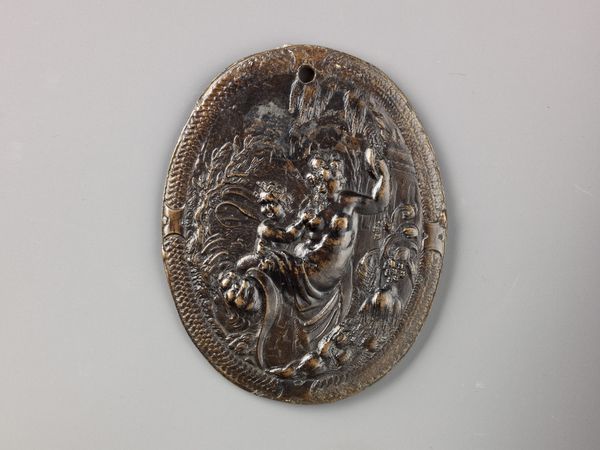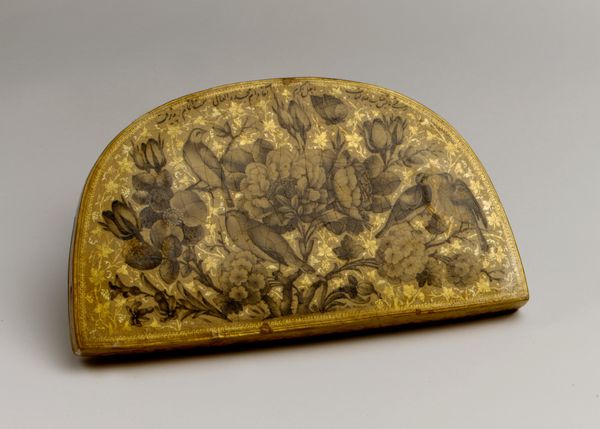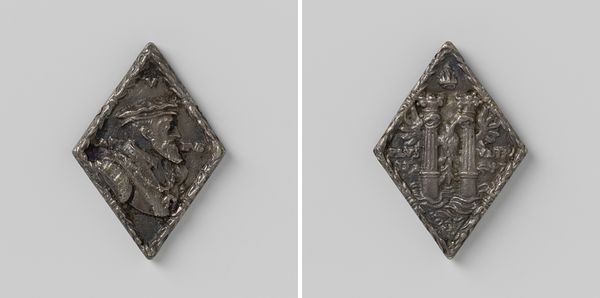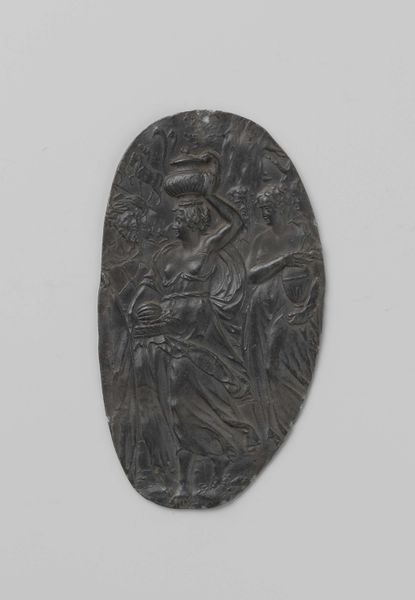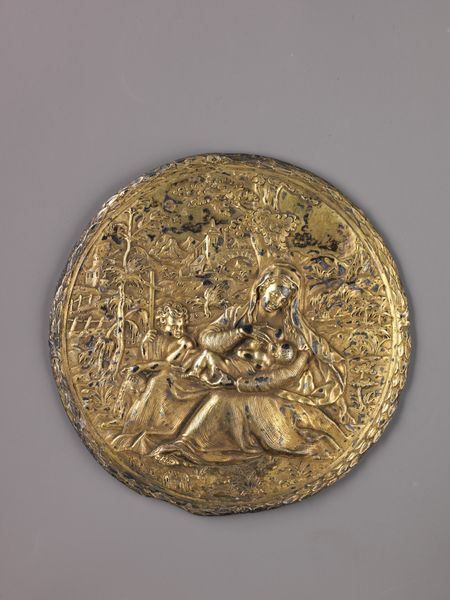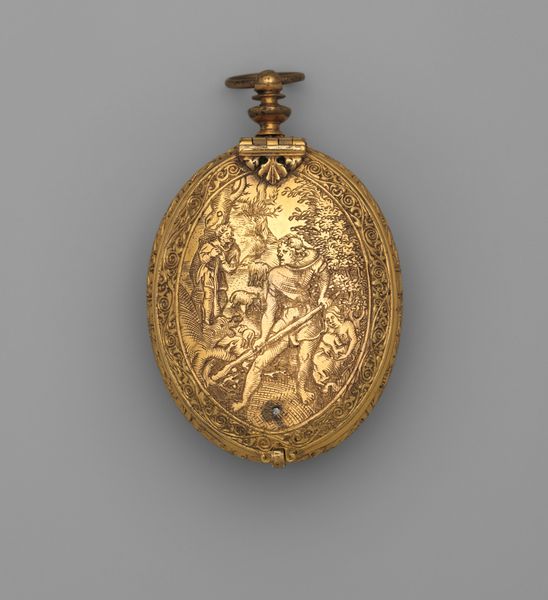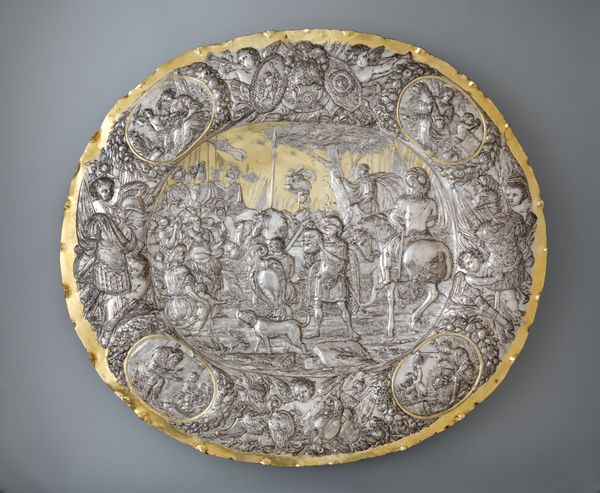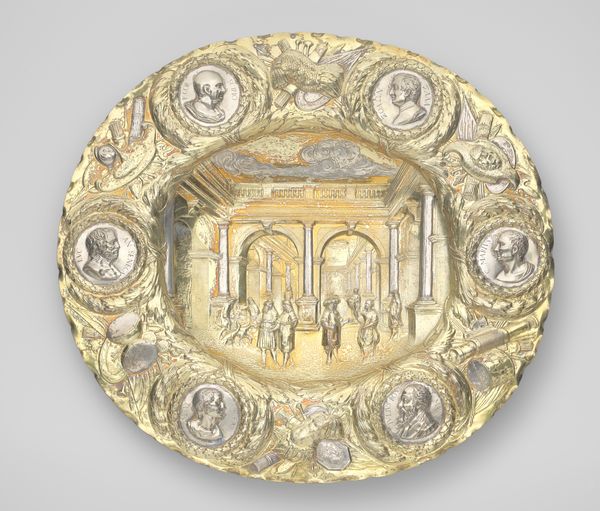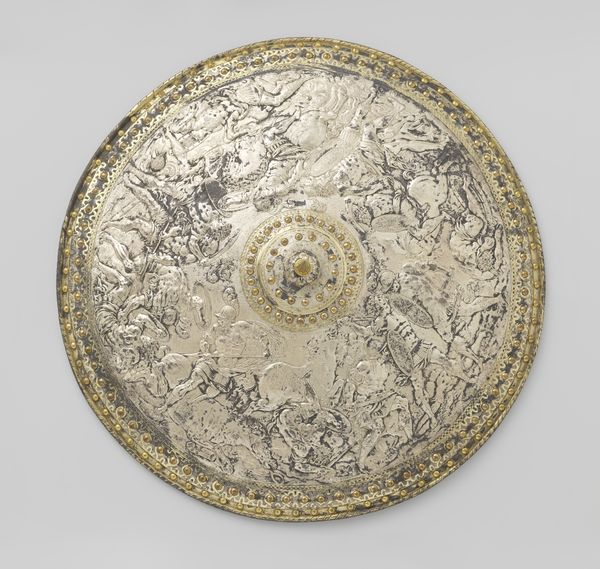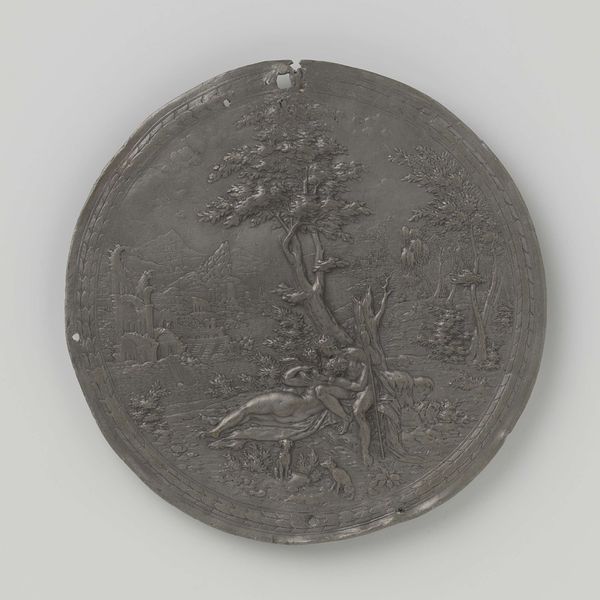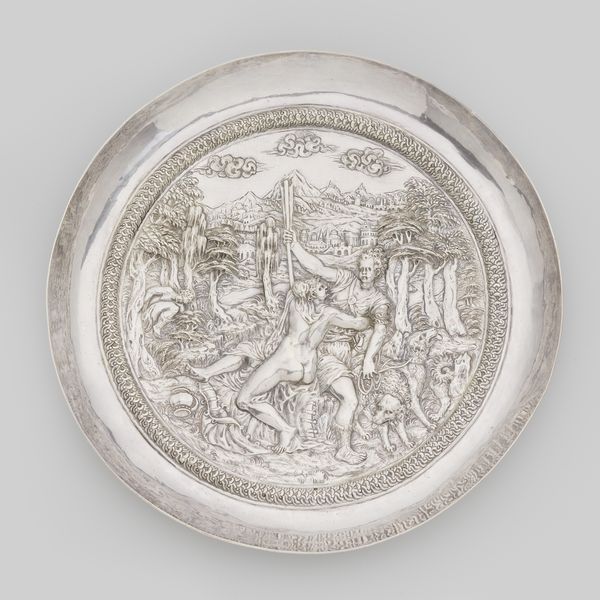
Galvanoplastische reproductie van een schild met de Opstand van de Titanen after 1877
0:00
0:00
metal, relief, sculpture
#
metal
#
sculpture
#
relief
#
figuration
#
sculpture
#
history-painting
Copyright: Rijks Museum: Open Domain
Curator: Look at this imposing shield, currently residing here at the Rijksmuseum. The descriptive title identifies it as a Galvanoplastische reproductie van een schild met de Opstand van de Titanen. The piece was created after 1877 by Elkington & Co. Editor: My first thought is how tactile it appears. The scene is so chaotic, with the figures practically spilling out from the surface of the metal. Curator: Galvanoplasty—the electrodeposition of metal—was gaining popularity then, blurring the line between fine art and industrial production. These metal reliefs democratized access to iconic images but also reflected Victorian society's fascination with technological advancement and reproduction. Editor: Absolutely, its availability undoubtedly amplified the mythos. How do you interpret the depiction of the Titanomachy itself? I see figures locked in conflict; it’s dense, a real struggle represented in a circle. Curator: Its origin as a battle shield is fascinating, of course. These objects gain new cultural value, displayed in a museum for educational value and to evidence societal progress. This reflects history painting which reinforces cultural narratives and legitimizes certain historical interpretations. Editor: That tension between utility and high art feels unresolved. It prompts questions: Is it a weapon, or a representation of one? What's its performative function versus its decorative function? Curator: These contradictions are part of its narrative. This work exists within systems of commerce, industry and art. That dialogue—between technique and aesthetics, production and narrative—shapes how we understand it today. Editor: Seeing it now I understand more the story this galvanoplastic piece communicates through materiality, production, and the enduring power of myth-making. Curator: Yes, its presence offers us a unique perspective on craftsmanship and art historical representation during that era.
Comments
No comments
Be the first to comment and join the conversation on the ultimate creative platform.
